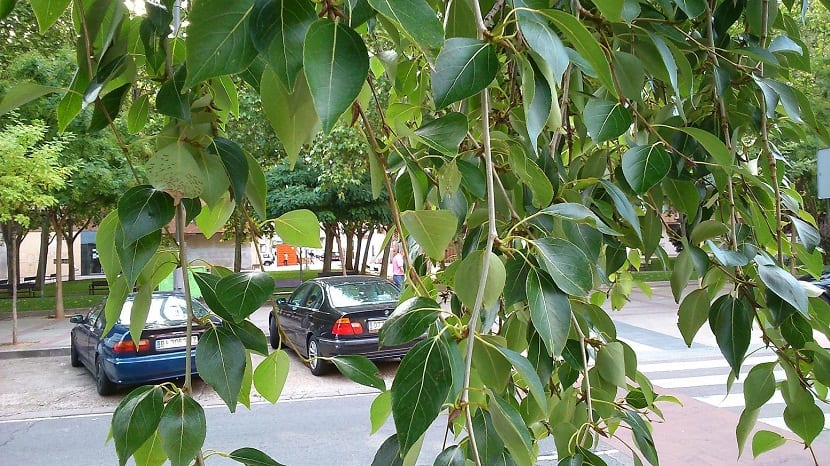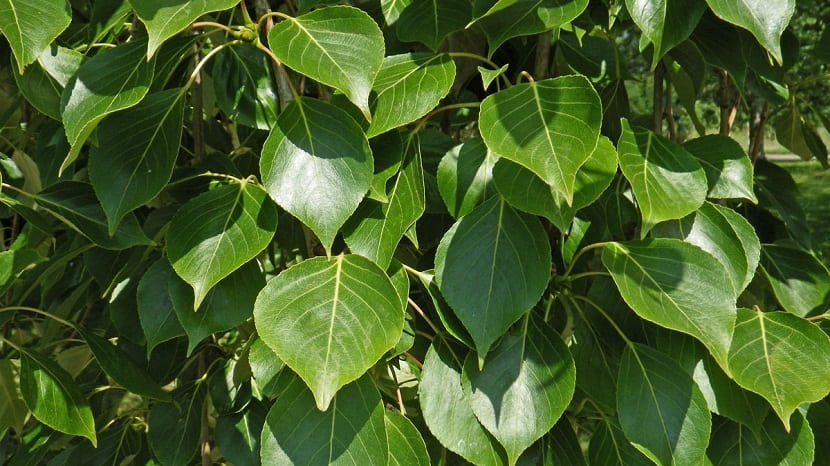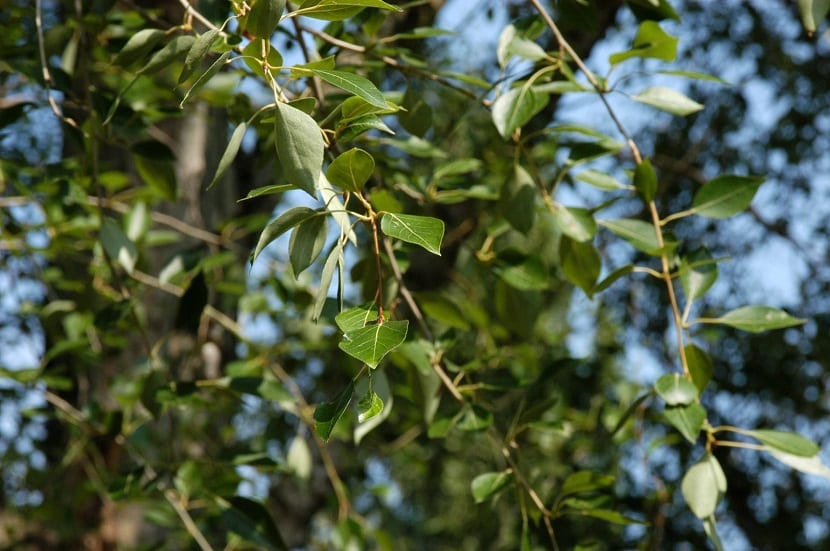
El Populus simonii belongs to the genus Populus, which they comprise approximately 40 species distributed among shrubs and trees in the temperate and cold northern regions, specifically those commonly known as poplars o poplars.
It made its first appearance during the Lower Cretaceous, however it was not until the Tertiary Era when it obtained an extensive representation. Bill Populus simonii It is part of the Salicaceae family.
From

These are native to the temperate zones found in the Northern Hemisphere, however, they also were introduced in the southern hemisphere. In this way it can be said that its location spans a large part of Europe, North America, an area of Asia and also North Africa.
Moreover, the hybrid of this tree is also quite widespread.
Characteristics of Populus simonii
It is a tree which develops very quickly, reaching great heights ranging from 10 to 30 meters and everything depending on the species. They have a smooth bark and their branches are usually very flexible.
As for the color they are grayish or whitish and they present marks horizontally, which they have shades a little darker, very similar to stretch marks.
The leaves are simple, projecting and are distributed alternately, they are regularly wide maintaining entire edges, which are usually toothed, serrated or lobed. The buds are usually covered by a kind of scales.
The petiole is elongated and glandular, it is often compressed on its lateral part, which gives the leaf better movement.
Moreover, poplar is hermaphrodite, which means that it is normal to find female and male flowers within the same species. The flowers are usually grouped in a racemose inflorescence and its pollination process is mainly based on the action of the wind, for this reason it is said to be an anemophilic plant.
Its fruit is capsule-shaped, most of the time it is dehiscent, deburred, its color at first is usually green, however and when it ripens especially during the summer season it obtains a brown tone. Releases a large number of small seeds It contains white vilano, making its appearance similar to that of cotton flakes.
Care and crops
Its roots tend to develop better and more strongly in supports that have clay, sandy or loamy textures, since these have better ability to stay moist. Bearing this in mind, it is important to adapt the irrigation until reaching an intermediate point so that the soil moisture is always stable.
To perform this task properly, certain factors need to be taken into account, such as the temperature, humidity of the environment, sun exposure and the texture of the substrate, among others.
It is very important to note that it does not resist flooding, for this reason the most advisable thing is to plant them in perfectly drained soils.
This tree requires a lot of sunlight, so at the time of planting it is important to take this factor into account, otherwise, could directly affect the development process of this species. If kept under optimal conditions it can grow quite fast.
Plagues and diseases

Insects are the greatest enemy of poplars, and can cause them significant damage, and these pests can be classified as follows:
- Defoliators: they eat the leaves of the poplars.
- Perforators: they dig large galleries in the wood.
- Suckers: they feed on the juices from the parenchyma.
Chemicals can be used to kill the insect plagueHowever, their use should be as limited as possible, applying them only in cases of extreme need. On the other hand and to eliminate fungi, the most recommended are preventive treatments, using proper planting methods and in turn making use of clones with greater resistance.
Uses
The wood of the Populus simonii It is widely used for making furniture and props, however its most significant utility is that of the plywood industry. For example, the support of the renowned painting the Mona Lisa is made of this wood.
They are found in many parks, as they provide shade and it is very pleasant and in southern Argentina they are used as windbreaking forest curtains.